Controversy Over State Listing Proposal for Western Joshua Tree
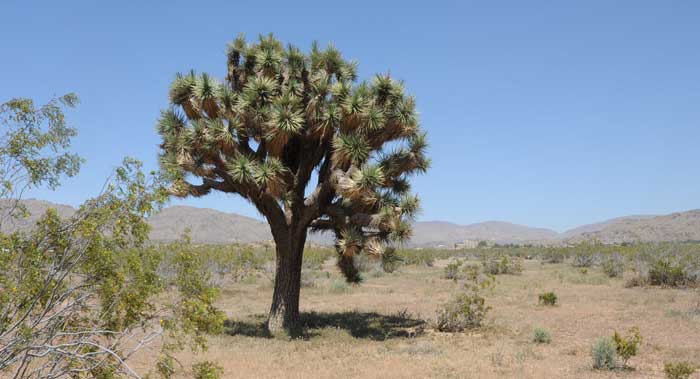
^Western joshua tree near Apple Valley CA.
We sent this letter to the California Fish and Game Commission:
To: Reference Attorney
Office of Administrative Law
300 Capitol Mall, Suite 1250
Sacramento, CA 95814
staff@oal.ca.gov
California Fish and Game Commission Attn: David Thesell
P.O. Box 944209
Sacramento, CA 94244-2090
fgc@fgc.ca.gov
October 13, 2020
Re: Notice of proposed emergency action concerning take of western Joshua tree
Basin and Range Watch is providing this comment recommending proposed emergency take of western Joshua trees, specifically for the solar industry, not be adopted by the Fish and Game Commission (Commission), after a September 22, 2020 vote.
The California Fish and Game Commission Notice provides that "Any interested person may present statements, arguments or contentions, in writing, submitted via U.S. mail, fax or e-mail, relevant to the proposed emergency regulatory action."
Basin and Range Watch is a 501(c)(3) non-profit working to conserve the deserts of Nevada and California and to educate the public about the diversity of life, culture, and history of the ecosystems and wild lands of the desert. Federal and many state agencies are seeking to open up millions of acres of unspoiled habitat and public land in our region to energy development. Our goal is to identify the problems of energy sprawl and find solutions that will preserve our natural ecosystems, open spaces, and quality of life for local communities. We
support energy efficiency, better rooftop solar policy, and distributed generation/storage alternatives, as well as local, state and national planning for wise energy and land use following the principles of conservation biology.
On October 21, 2019, the Fish and Game Commission received a petition from the Center for Biological Diversity (CBD) to list the western Joshua tree (Yucca brevifolia) as threatened under the California Endangered Species Act (CESA). California Fish and Game Code Section 2073.5 requires that the California Department of Fish and Wildlife (CDFW) evaluate the petition and submit a written evaluation with a recommendation to the Commission, which was received at the Commission’s April 2020 meeting. The petition moved forward.
On September 22, 2020, the Commission determined by a 4 to 1 vote that listing may be warranted pursuant to Fish and Game Code Section 2074.2, and therefore, the western Joshua tree will become a candidate species under CESA, and CDFW will undertake a one-year status review. After it receives the California Department of Fish and Wildlife’s status review, the Commission will make a final decision on listing. Candidate species are protected under CESA pursuant to Fish and Game Code Section 2085 during the remainder of the CESA listing.
We must kill the Joshua trees now in order to save them from Climate Change later.
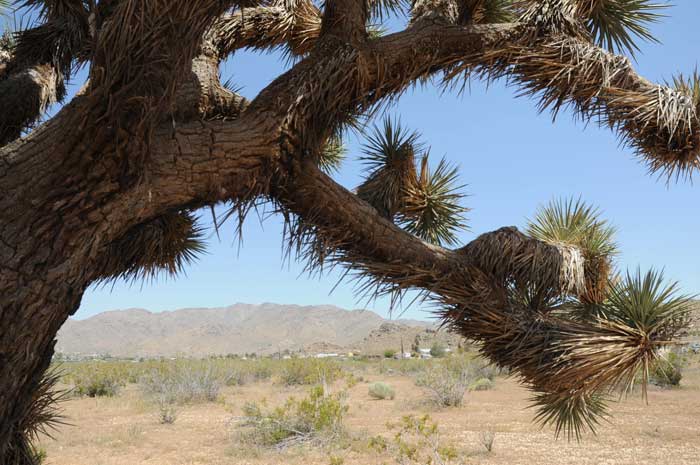
^Joshua tree in rural Apple Valley CA.
Yet an obscure and little-invoked section of the California Fish and Game Code, Section 2084, where the commission may allow the taking of a candidate, threatened, or endangered species for any reason, was invoked after closed-door lobbying by the solar industry. Center for Biological Diversity agreed to this negotiation to exempt utility-scale solar projects from avoiding and better mitigating the killing of Joshua trees, mostly in Kern County.
Apparently based on precedent using this rare 2084 exemption (and not well-explained during the meeting), the commission explained that this was an emergency exemption, based on an "immediate serious harm to human health." Apparently this meant that if thousands of acres of new utility-scale solar projects were not built immediately, human health would be endangered by climate change. Thus the emergency 2084 exemption was invoked to allow the solar companies to develop western Joshua tree habitat--possibly as much as 60,000 acres in 15 projects. Yet no analysis was undertaken as to how destroying so much carbon-sequestering habitat might also threaten human health and increase Carbon emissions.
The exact wording from a Statement of Proposed Emergency Regulatory Action by the California Fish and Game Commission, dated September 25, 2020, allows take of western Joshua trees for this rare special exemption that will now become precedent in the code of regulations (PDF here):
CESA also provides that the Commission may adopt regulations to authorize take of candidate species under F&G Code Section 2084. At its August 19, 2020 meeting, the Commission heard testimony from several stakeholders expressing concern about the inability to proceed with projects related to critical infrastructure and renewable energy during the candidacy period. Department staff indicated that there was the possibility to
provide an exemption for certain projects under F&G Code Section 2084, and that the option could be explored in this case.
Following the August 2020 meeting, several renewable energy project proponents contacted the Department to express concern about projects that had already completed environmental permitting and review and were projected to initiate and complete construction activities during the western Joshua tree candidacy period. The
proponents asserted that proceeding as quickly as possible with their projects is imperative as those projects will provide renewable energy sources needed to meet California’s goals in reducing fossil fuel use and their contribution to climate change impacts. Because climate change is the principal threat to western Joshua tree identified in the listing petition, the projects will also contribute to the species recovery in the long-term.
The Department subsequently requested that stakeholders interested in the 2084 incidental take option submit their projects for consideration. The Department met with stakeholders representing 24 renewable energy projects in Kern and San Bernardino counties to determine whether each of the projects met the criteria of having completed or nearly completed permitting processes and anticipated near-term groundbreaking
activities.
The proposed addition of Section 749.10, Title 14, California Code of Regulations (CCR) creates a special order allowing incidental take of western Joshua tree during CESA candidacy for identified renewable energy projects that have met the above qualifications and continuation with planned development activities as well as take for
research and monitoring. After consultation with renewable energy developers and local governments, the Department and stakeholders agreed on a list of 15 renewable energy projects to include in this proposed Section 2084 regulation. Throughout this process, the Department also consulted the Center for Biological Diversity, which filed the listing petition for western Joshua tree.
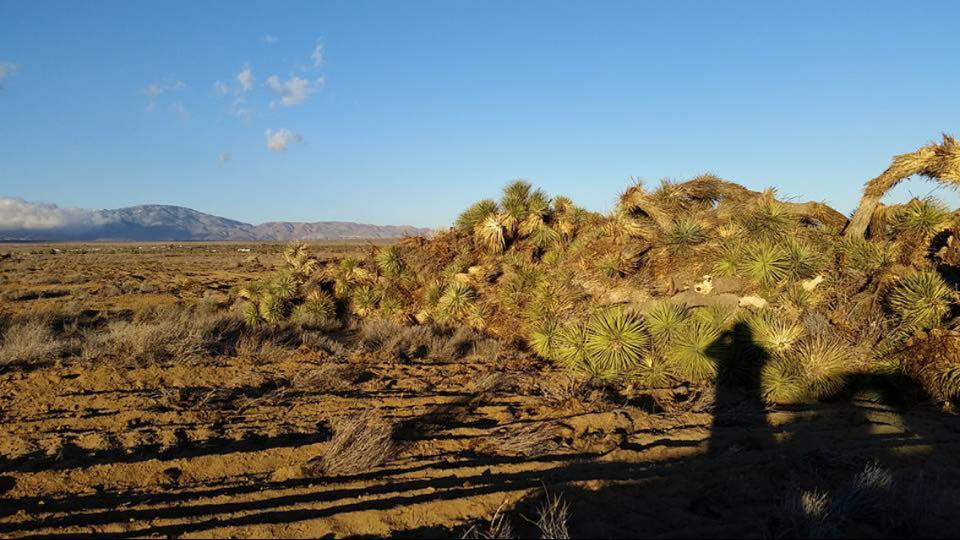
^Joshua trees bulldozed and piled like trash to construct a solar project near Rosamond CA in the West Mojave.
Basin and Range Watch objects to this special emergency exemption that had no public review or comment period, nor scientific analysis under the California Environmental Quality Act (CEQA). We request the emergency action be rescinded and a full environmental review take place under CEQA.
Meetings behind closed doors with project proponents and one environmental group do nothing to allow public transparency, and discussion of better alternatives (such as rooftop solar and Distributed Energy Resources) that would truly conserve western Joshua trees.
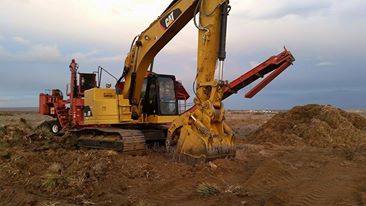
^Heavy equipment removal of western Joshua trees before grading for a solar project near Rosamond in the West Mojave.
If western Joshua trees are threatened with climate change impacts, then all possible alternatives should be explored in an Environmental Impact Review, in order to find ways to maximize avoidance of Joshua tree habitats from habitat removal, and also to avoid take. This was not done.
The precedent created by invoking this emergency 2084 exemption for developing habitat may now open the door to further energy sprawl development across Joshua tree habitats. We are not convinced that such emergency exemptions, now codified in state regulation, will be used in the years to come as a way solar developers can get around a state threatened listing under CESA. How will the Commission assure the public that this proposed addition of Section 749.10, Title 14, California Code of Regulations will not be simply modified and extended into the far future, always allowing solar companies to obtain climate change emergency exemptions and programmatic take permits?
The emergency regulation allows Joshua tree take on:
(A) Aratina Solar Farm, 8minute Solar Energy/64NB 8ME LLC, Kern County.
(B) Bellefield Solar Farm, 8minute Solar Energy/50LW 8ME LLC, Kern County.
(C) Big Beau Solar, EDF Renewables, Inc./Big Beau Solar, LLC, Kern County.
(D) Camino Solar, Avangrid Renewables, LLC/Aurora Solar, LLC, Kern County.
(E) Chaparral Solar, First Solar, Inc./Chaparral Solar, LLC/Chaparral Springs, LLC, Kern County.
(F) Edwards AFB Solar, Terra-Gen Power Holdings II, LLC/Edwards Solar, LLC, Kern County.
(G) Kudu Solar Farm, 8minute Solar Energy/69SV 8ME LLC, Kern County.
(H) Rabbitbrush Solar, First Solar, Inc./Rabbitbrush Solar, LLC, Kern County.
(I) RE Gaskell West 2, Recurrent Energy, LLC/ RE Gaskell West 2 LLC, Kern County.
(J) RE Gaskell West 3, Recurrent Energy, LLC/ RE Gaskell West 3 LLC, Kern County.
(K) RE Gaskell West 4, Recurrent Energy, LLC/ RE Gaskell West 4 LLC, Kern County.
(L) RE Gaskell West 5, Recurrent Energy, LLC/ RE Gaskell West 5 LLC, Kern County.
(M) Rubita Solar, SF Rubita, LLC, San Bernardino County.
(N) Willow Springs Solar 3, First Solar, Inc./Willow Springs Solar 3, LLC/Chaparral Springs, LLC,
Kern County.
(O) Windhub Solar B, First Solar, Inc./Windhub Solar B, LLC, Kern County.
This could equate to perhaps 60,000 acres of relatively intact and functioning Mojave Desert habitat in the West Mojave region, and tens of thousands of individual Joshua trees.
Mitigation is Pitifully Weak
Unfortunately, proposed mitigation is pitifully weak. The Statement goes on to detail the supposed "mitigation to bulldozing" western Joshua trees in order to build utility-scale solar projects--and we know all those photovoltaic panels could equally go on rooftops, over parking lot shade structures, on true brownfields, and in the urban environment instead of on wildlands, native ecosystems, in underserved communities, and far from load centers.
To satisfy the compensatory mitigation requirement, prior to commencing any project activities in areas that may contain western Joshua trees, the project proponent shall pay a mitigation fee of $10,521.95 per acre to be deposited into the Western Joshua Tree Mitigation Fund (to be established by the Department). The fee accounts for biological monitoring, infrastructure, short- and long-term habitat maintenance, and reporting activities (as shown in Table 1. Western Joshua Tree Management Fee Estimate.)
The fee estimate is a per acre mitigation cost for the purpose of calculating the individual project mitigation fee. The fee estimate was derived by the average number of acres and cost per acre of recent sales (previous six months) of lands that contained western Joshua trees in the Mojave desert; the prevailing wage rates for qualified biologists and land managers to conduct biological monitoring and other land management activities such as trash clean-up and removal; the cost (in 2020 dollars) of fencing materials, signage, and prevailing wage rates for fencing installation and repair, and equipment and materials for invasive species control; and the cost based on prevailing wage rates for data management and to produce an annual land management report. (https://nrm.dfg.ca.gov/FileHandler.ashx?DocumentID=183275)
So the mitigation proposed for take of cumulatively bulldozing around 60,000 acres of Joshua
tree habitat will be interpretive signs, biologists picking up trash, building unspecified fences,
and quite a lot of payments made for biologist salaries, "reporting activities," non-transparent
and unspecified monitoring activities, and data management--a lot of bureaucracy siphoning off
those mitigation fees. How will the Joshua trees actually be conserved?
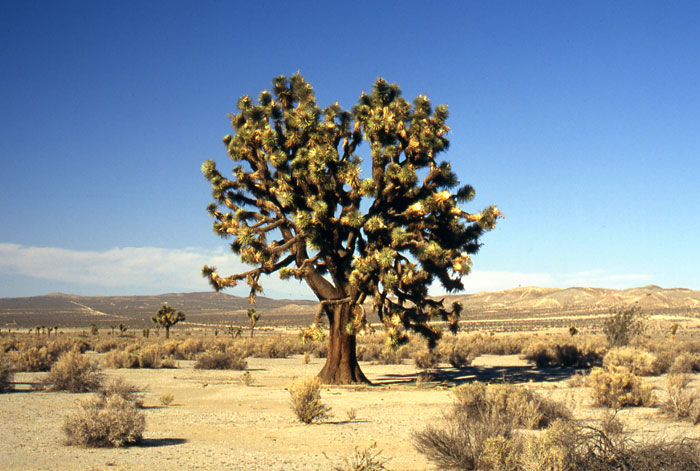
^Western Joshua tree in Kern County. If a solar developer wants to buldoze and grade this, the state is OK with that now according to the 2084 special exemption.
Dissenting Vote
We agree with the one dissenting vote on September 22, that of Commission Vice President Samantha Murray, who voiced concern over the use of the section 2084 exemption. She noted this exemption was meant to be used sparingly, and not become a backdoor to economic decisions. Rather, a section 2081 permit with avoidance and minimization measures could have instead been issued. A section 2081 permit would have caps to numbers of Joshua trees taken. The petition was well-publicized in 2019, she noted, and solar developers could have been more pro-active to conserve Joshua trees and site proposed solar projects better. There is no detailed analysis, no cost-benefit analysis, and no important consideration of tribal concerns on sacred lands. Therefore, Murray voted no to amending the code to add a section on emergency exemptions and rule making under Title 14. We wholeheartedly agree.
Destroying Joshua trees now in order to build utility-scale solar projects which claim to save Joshua trees in the future from climate change, is a false choice: we can have solar in the built environment and conserve large areas of the western Joshua tree so that these populations are more resilient to climate change impacts in the future.
A Reasonable Alternative

With all of the rooftops and parking lots in California, renewable energy can be utilized on rooftops and above parking lots. The US Department of Energy says, “The number of U.S. households with rooftop solar is rapidly growing. The amount of grid-connected solar is expected to double in just two years. With this large number of PV homes in the U.S. and a continuing robust market for additional PV installations, an ever-increasing number of PV homes will likely be sold or refinanced.”
Just a few of the many examples we could use for a renewable energy future that also protects Joshua trees:
From Bill Powers: The “Roadmap to 100 Percent Local Solar Build-Out by 2030 in the City of San Diego,” was released today and is attached (with links below to the press release and report). The intent of the Roadmap is to provide a workable pathway to equitable solar and storage for all residents in San Diego. On-bill financing, available to owners and renters, good credit or marginal credit, is discussed throughout the document.
The current exit fee scheme in California, the PCIA (Power Charge Indifference Adjustment), creates a major disincentive for community choice aggregators (CCA) to prioritize behind-the-meter (BTM) rooftop solar by concentrating a large annual fixed cost (the PCIA exit fee charge) on total grid power sales (grid kWh). Any steps taken that reduce grid power sales, like BTM energy efficiency measures and BTM solar/storage, has the effect of punishing non-solar customers who are not taking these steps by concentrating the PCIA charge on these customers (and their grid power kWhs). The Roadmap is intended to deal with this problem in a way that accelerates local solar without driving-up the PCIA charge on non-solar customers. In a nutshell, the concept is to prioritize feed-in tariff solar on parking lots and warehouse rooftops, that is capped at a level the CCA can live with economically (for example, $0.07/kWh), coupled with a reverse auction mechanism to get the lowest possible price for this FIT solar/storage (which should be less than $0.05/kWh). In this FIT example, bids cannot exceed $0.07/kWh, but they can be as low as a pre-qualified bidder is willing to go. This FIT solar resource serves as a revenue stream for the CCA to partially offset the impact of concentrating the PCIA charge on non-solar customers. The Roadmap assumes that San Diego continues its ~100 MW per year BTM solar installation rate over the next decade, with these BTM additions occurring in parallel with the FIT solar projects. This approach allows San Diego (and other cities that are part of a CCA) to accelerate local solar as we work to counter, either administratively at the CPUC or legislatively in Sacramento, the problems that the current PCIA charge creates for the development of BTM resources in San Diego and everywhere in California where CCAs have formed.
Roadmap press release: https://protectourcommunities.org/press-release-roadmap-to-100-percent-local-solar-build-out-by-2030-in-the-city-of-san-diego/
Nevada's Opportunity for a Sustainable, Equitable Transition to Clean Energy:
Steering Economic Stimulus Toward Sustainability: A Case for Distributed Generation:
https://www.mojavedesertblog.com/2020/04/steering-economic-stimulus-toward.html
Community-driven microgrid, with no long high-voltage transmission lines (that frequently spark megafires):
https://rmi.org/community-resilience-through-nigerias-first-undergrid-minigrid/
Cisco DeVries (who basically invented PACE lending) has started a "load shifting/demand reduction" company that contracts with individual homes and businesses to reduce their electricity loads for a single hour when they receive an alert - these are hours that the California Independent System Operator (CAISO) has forecast shortfalls and has also forecast specific use for every meter and typically occur 2-3 times a week. If the customer reduces their use below the CAISO forecast for their meter for that hour, they get points:
